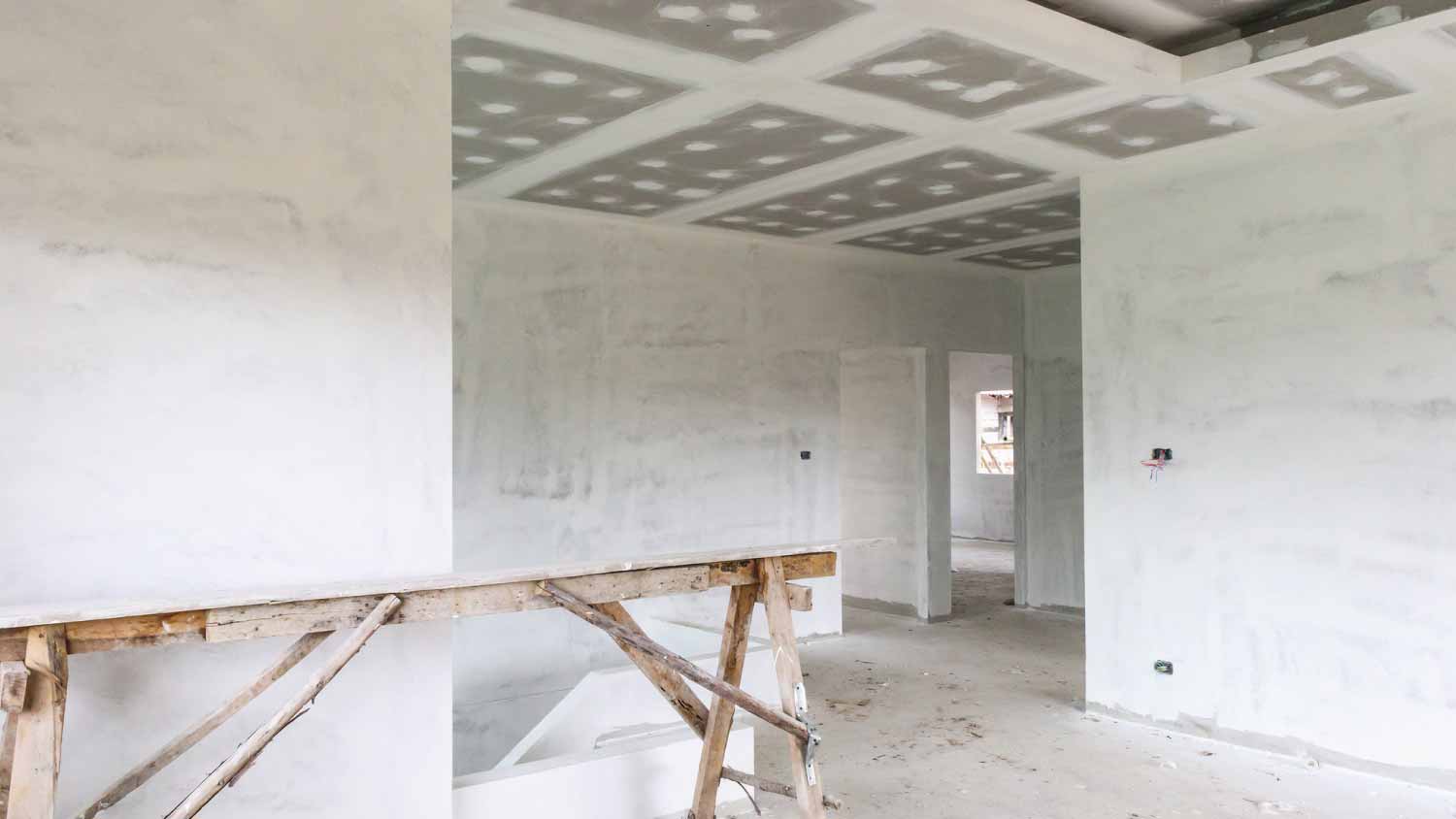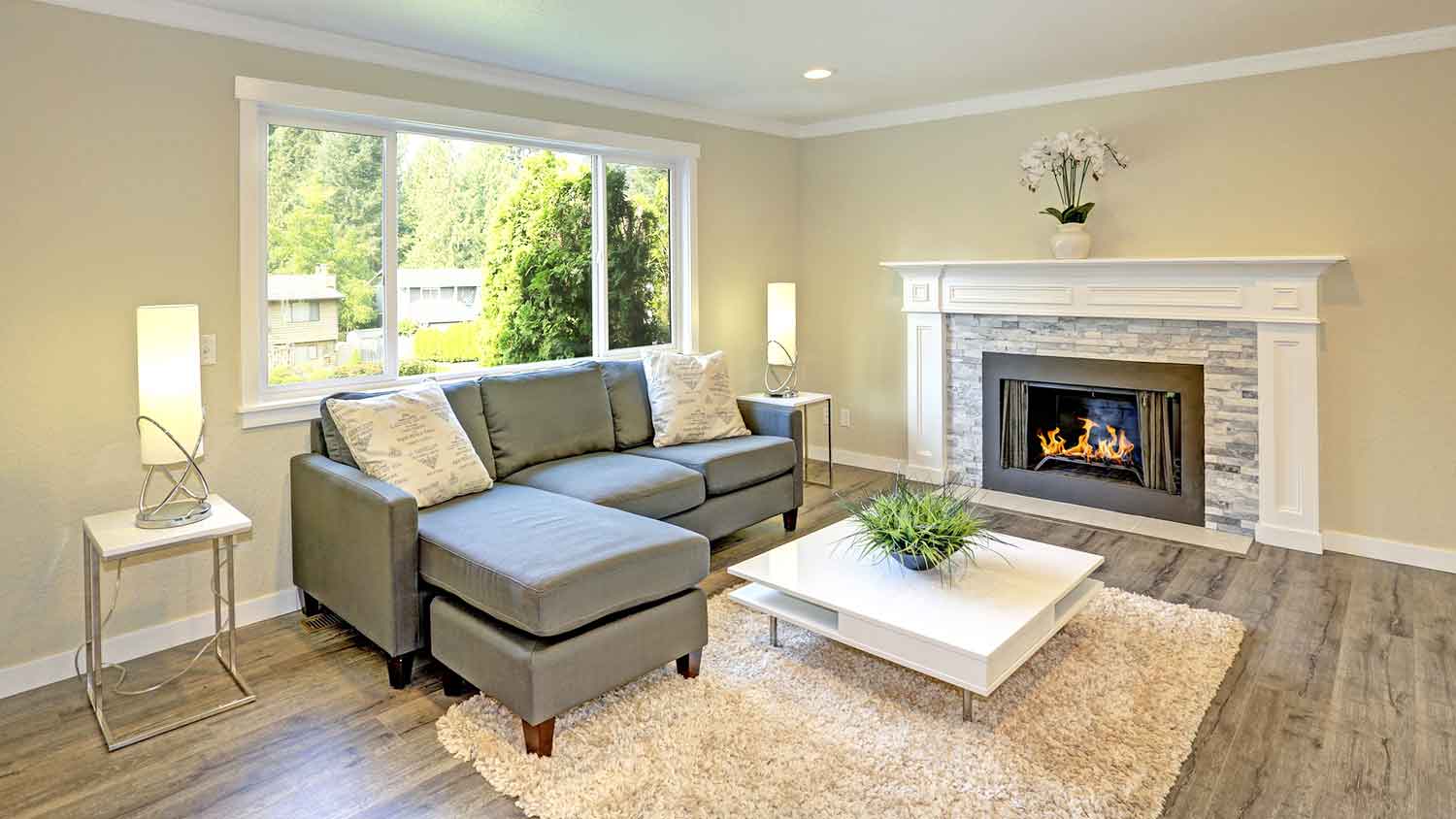3 Common Reasons Your Wall Feels Cold and Wet
Dampness is not delightful
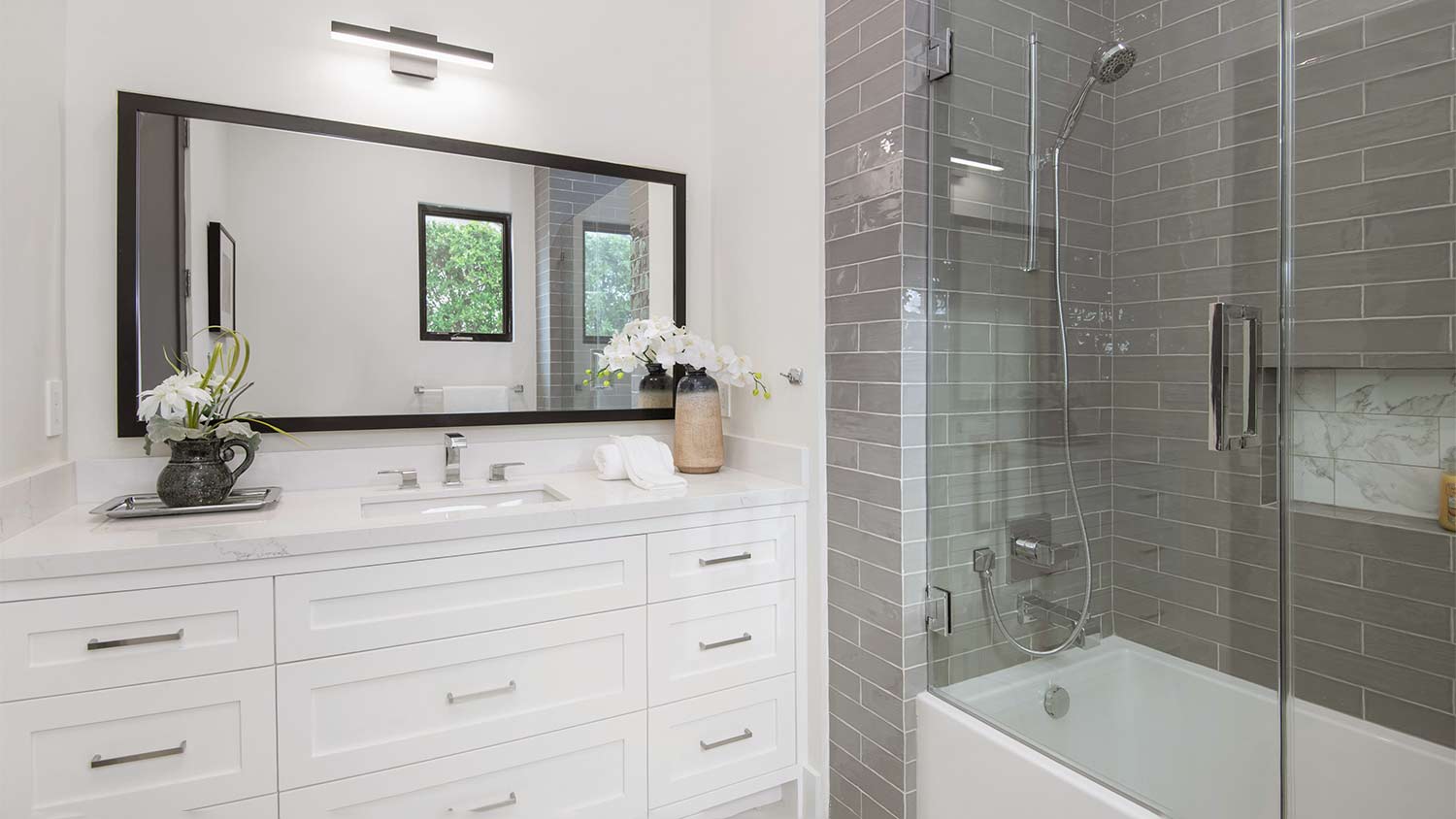

Cold and wet walls may be a sign of a larger issue.
Running a fan can help reduce condensation in the bathroom or kitchen.
Call a pro if you suspect a water leak.
A cold and wet wall is the result of excessive moisture either seeping in from the exterior of the home or forming as a result of humidity inside the home. Either way, it’s important to get to the root cause of why the wall feels cold and wet so you can remedy the situation before mold and mildew start to grow. Here are three common reasons why your wall feels cold and wet and how to resolve the issue.
1. Poor Ventilation
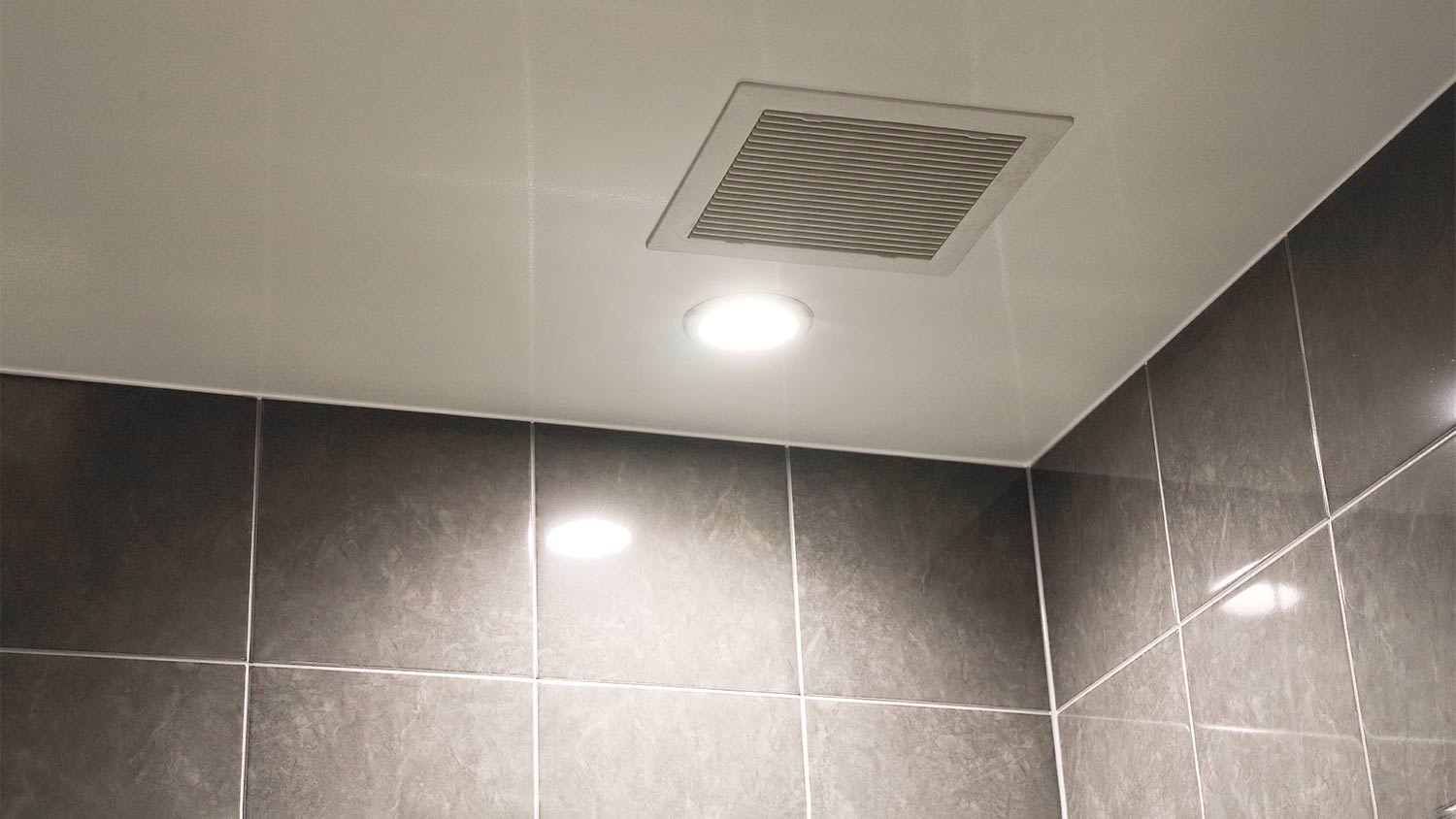
When walls feel cold and wet, it’s likely because condensation formed as a result of a temperature difference between the inside and outside or because of excess indoor humidity. This is especially likely to happen in the kitchen and bathroom where heat and moisture commonly form.
How to Fix It
Proper ventilation and a dehumidifier can help lower your home’s humidity and prevent condensation. Running the bathroom fan when the shower is on and the stove vent while cooking can help reduce the humidity by pulling the hot air out of the room.
2. Water Leak or Seepage Behind the Wall
When water is present behind the wall, it can cause condensation on the interior side. This condensation makes the wall feel cold and wet. These types of leaks can also lead to other, more serious issues, like mold and mildew growth and cracks in the wall. Another reason for a water leak could be a leaking or burst plumbing pipe.
How to Fix It
Identifying and repairing leaks will likely be a job for a drywall repair pro, plumber, or general contractor, depending on where the leak is coming from. While you can do your due diligence to find a leak in your home and determine whether it’s from a crack in the exterior wall or roof or because of a plumbing leak, you’ll need to call in a plumber or contractor to explore repair options.
3. A Lack of Insulation
Insulation not only helps keep a home warm, but it also acts as a barrier to reduce temperature fluctuations between the interior and exterior walls. When insulation is poorly installed or has sagged, thermal bridging occurs. When it’s colder outside than inside, this lack of insulation can allow condensation to form on the interior wall, making it feel cold and wet.
How to Fix It
Adding insulation to existing walls is possible, and it can help protect your walls from condensation. A local drywall repair pro can install insulation without tearing out all of the drywall by injecting foam insulation or blow-in insulation. If you’re doing a larger remodeling job and removing the drywall, they can also add continuous insulation that will run between the studs and the drywall, which can also reduce interior condensation.
Signs of a Water Leak
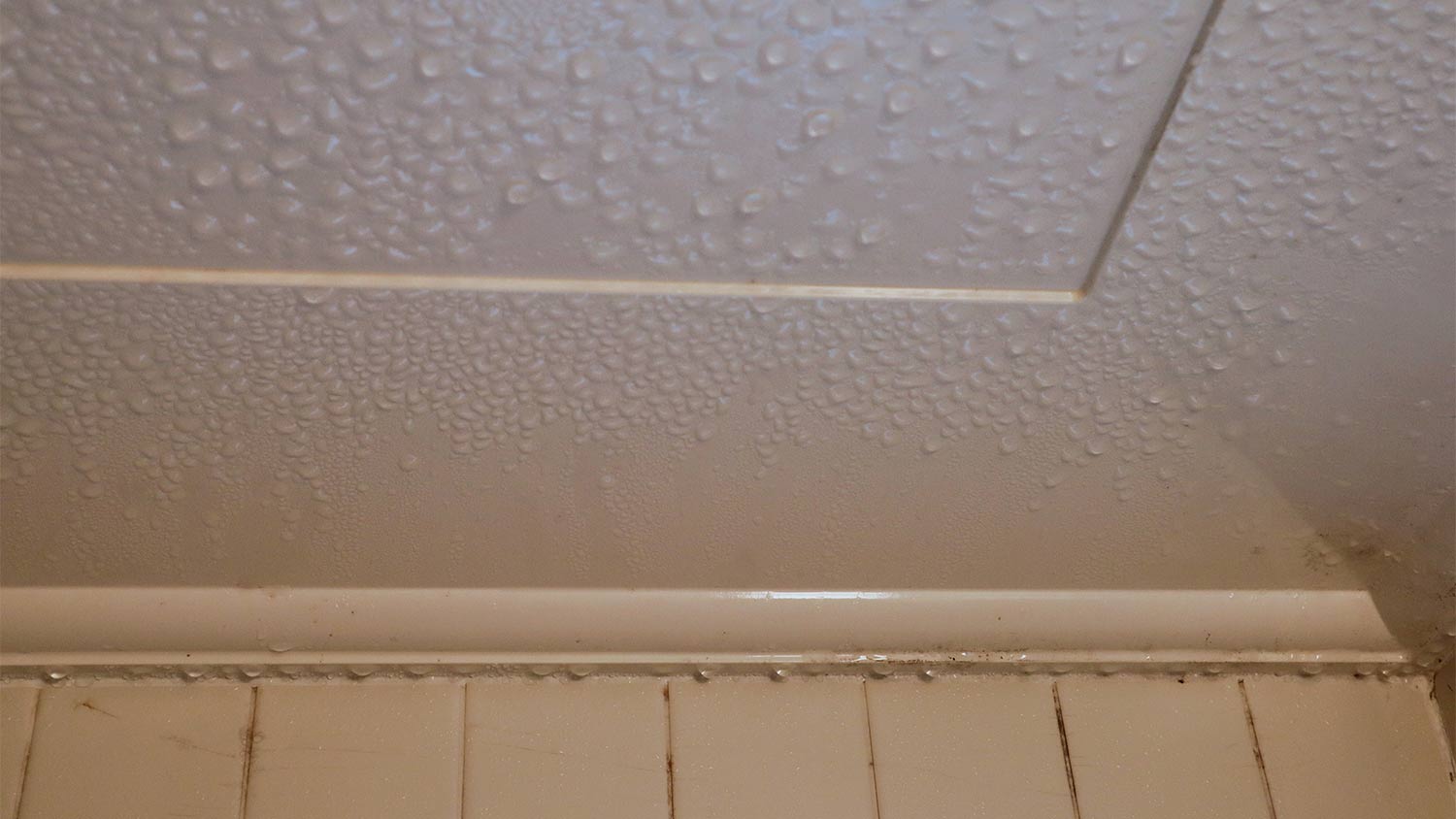
A wet and cold wall is a sign that there could be a leak behind the wall, either from the plumbing or from a crack in the exterior wall. Besides the wall being cold and wet, other signs of a leak include discoloration, mold or mildew growth, cracks, wet spots, and peeling paint or wallpaper.
When to Call a Pro
When you notice that your wall feels cold and wet, call a pro immediately. Wall and roof leaks, if not addressed quickly, can lead to a host of problems for the interior and exterior of your home. If the issue is a result of a plumbing leak or from water entering from a leak in the exterior, it can cause mold growth, cracks, discoloration, sagging drywall, and more issues that will continue to get worse as long as the water is allowed to enter unchecked. Do your best to identify where the issue is, so you can direct the contractor or plumber to the right area, but fixing the issue is likely beyond basic DIY skills. Hiring a pro is the best course of action if you suspect a leak.
Frequently Asked Questions
If your wall is wet, but there isn’t a leak, it’s likely a result of humidity and condensation from running a hot shower or cooking in the kitchen. The best way to remedy this issue is to run the fan in the bathroom when you’re showering or in the kitchen when you’re cooking. You can also use a dehumidifier to help remove moisture from the air.
The best way to fix dampness in walls is to find the root cause and fix the underlying issue. After that, you’ll need to dry the wall with a heavy-duty fan and potentially a dehumidifier. If the wall has water damage, you can remove the damaged drywall, patch it with a new piece, and then paint it to match the rest of the wall.



